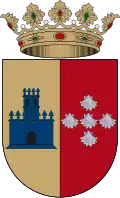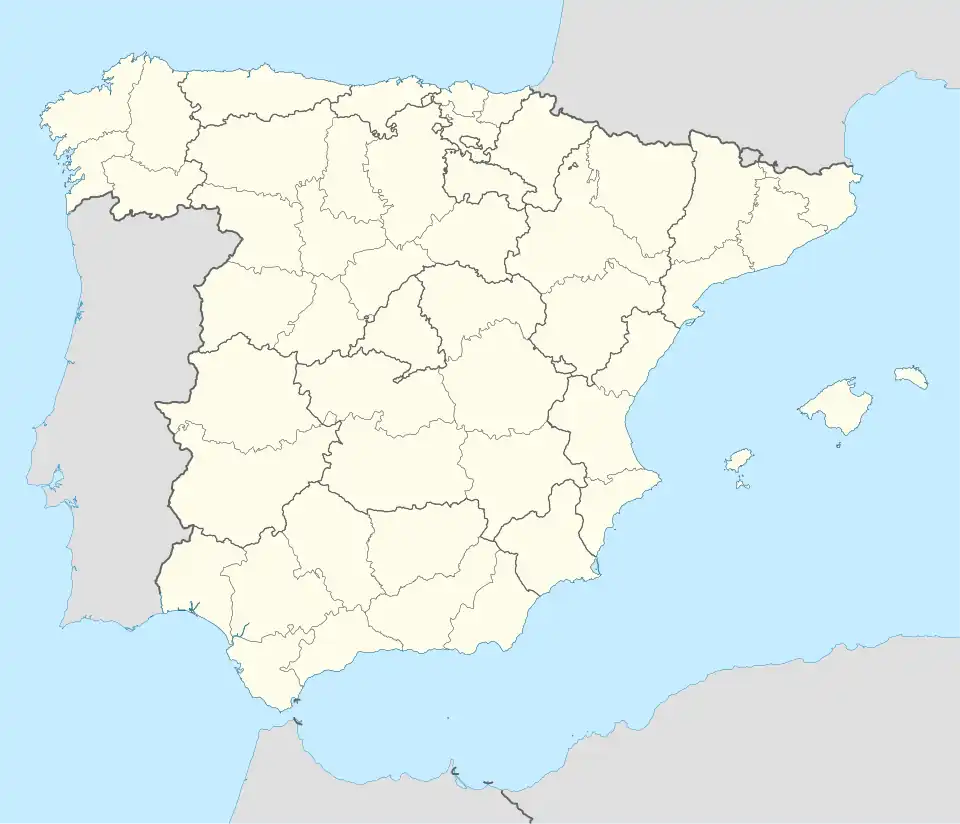Zarra, Spain
Zarra | |
|---|---|
 | |
 Flag  Coat of arms | |
 Zarra Location in Spain | |
| Coordinates: 39°5′30″N 1°4′36″W / 39.09167°N 1.07667°W | |
| Country | |
| Autonomous community | |
| Province | Valencia |
| Comarca | Valle de Ayora Cofrentes |
| Judicial district | Requena |
| Government | |
| • Alcalde | Raúl Martínez Martínez (PSOE) |
| Area | |
• Total | 49.72 km2 (19.20 sq mi) |
| Elevation | 605 m (1,985 ft) |
| Population (2022)[1] | |
• Total | 615 |
| • Density | 12/km2 (32/sq mi) |
| Demonym | Zarrino/a |
| Time zone | UTC+1 (CET) |
| • Summer (DST) | UTC+2 (CEST) |
| Postal code | 46621 |
| Official language(s) | Spanish |
| Website | Official website |
Zarra is a municipality in the Valencian Community, Spain,[2] the smallest of the seven villages that make up the comarca of Valle de Cofrentes.
Historical Interest
The name is of Iberian origin and means "the old".
The village contains a church dating back to the 18th century and a free standing clock tower built in 1880. The majority of the houses date back 400 years.
During the Moorish occupation of Spain a castle was built, but no remains exist today and the exact site is somewhat of a mystery. The village was reconquered by the Spanish in 1249 and incorporated into Valencia in 1281. Modern day Zarra dates from around 1600.
Modern Zarra
The village has a population of around 500, recent population increases being mainly due to the British influx into the village and surrounding area.
Fiestas
Zarra boasts three fiestas a year, marking the beginning of the fiestas within the valley. The first being San Anton (January), Santa Ana (July) and the main yearly "bull" fiesta (late July/August).
Local industry
The main industry for the village is agriculture, in particular the growing of cherries and olives.
References
- ^ "Instituto Nacional de Estadística. (Spanish Statistical Institute)". www.ine.es. Retrieved 2023-11-16.
- ^ Ward, Lester Frank (1889). The geographical distribution of fossil plants. Harvard University: Govt. Print. Off. p. 704.
